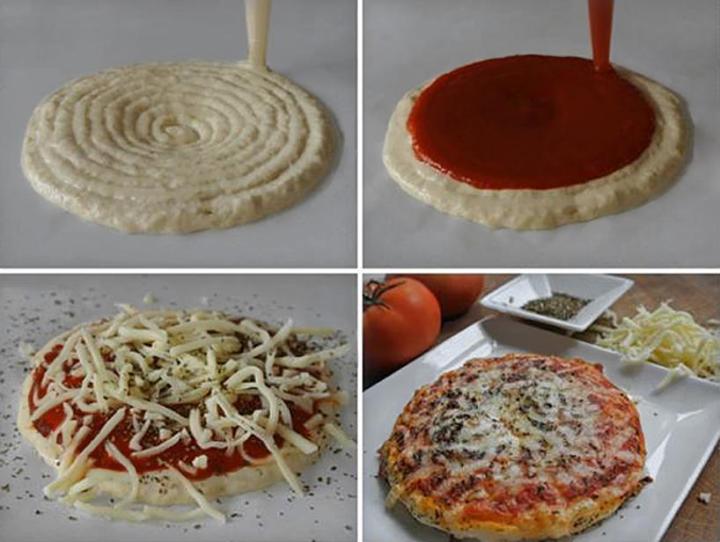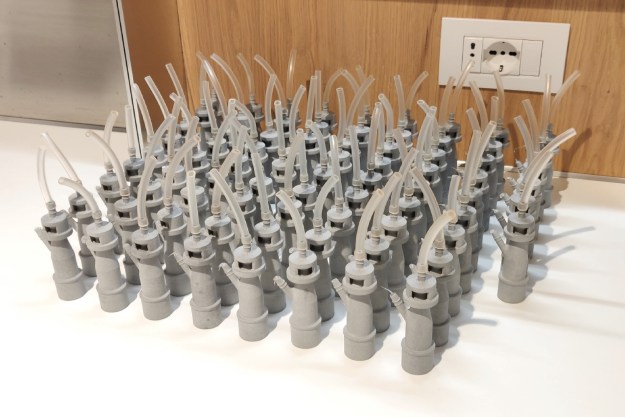
For some odd reason, pizza always seems to be at the forefront of emerging technology. It was the first food you could buy via online ordering, the first food to legitimately be delivered via drones, and now it’s dipping its saucy little Italian toes into 3D printing.
Natural Machines, a startup out of Barcelona, has developed a prototype 3D printer called Foodini that can pump out decent, edible-looking pizza just like a normal 3D printer pumps out custom-made lightswitch covers and drain plugs.
This isn’t the first time that somebody’s taken a crack at 3D printed food, but it’s arguably one of the best attempts that’s surfaced thus far. NASA has been working on 3D printed food for quite some time, and a handful of other organizations have posted videos like this one that show it’s a viable concept. Most of these early attempts result in a pizza that doesn’t exactly look appetizing.
Foodini, on the other hand, can actually make a pie that doesn’t look half bad. It starts by pumping a dough mixture in a tight spiral, then repeating the same process with sauce. The cheese and seasonings are sprinkled on top by hand, which we’re pretty sure is cheating, but we’re willing to give Natural Designs a pass for now, especially since Foodini does more than just pizza. In addition to pies, the printer can make things like cookies, chocolates, and even stuffed ravioli. Check out the video below to see it in action.
At this point the device is still just a protoype, but Natural Machines is working to finalize the design and begin mass production. In the end, Foodini is intended to be used as a domestic appliance like a microwave or fridge, but we’re more excited by it’s potential applications at the enterprise level. If food printers found their way into the fast food industry they could potentially eliminate the human element in pizza making. Imagine being able to order online, have your pizza made to order by a 3D food printer, and then delivered via quadcopter drone. Look up the definition of the word “utopia” in the dictionary, and we’re pretty certain that’s in there somewhere.
Find out more at Natural Machines
Editors' Recommendations
- 3DMakerpro’s Seal is a pocket-sized scanner to make next-gen precision 3D prints
- Need a last-minute Halloween costume? Check out these 3D-printable getups
- The best 3D printers under $500
- The future of making stuff: Inside the evolution of 3D printing with Formlabs
- Inside the quest to 3D print a perfectly palatable steak




